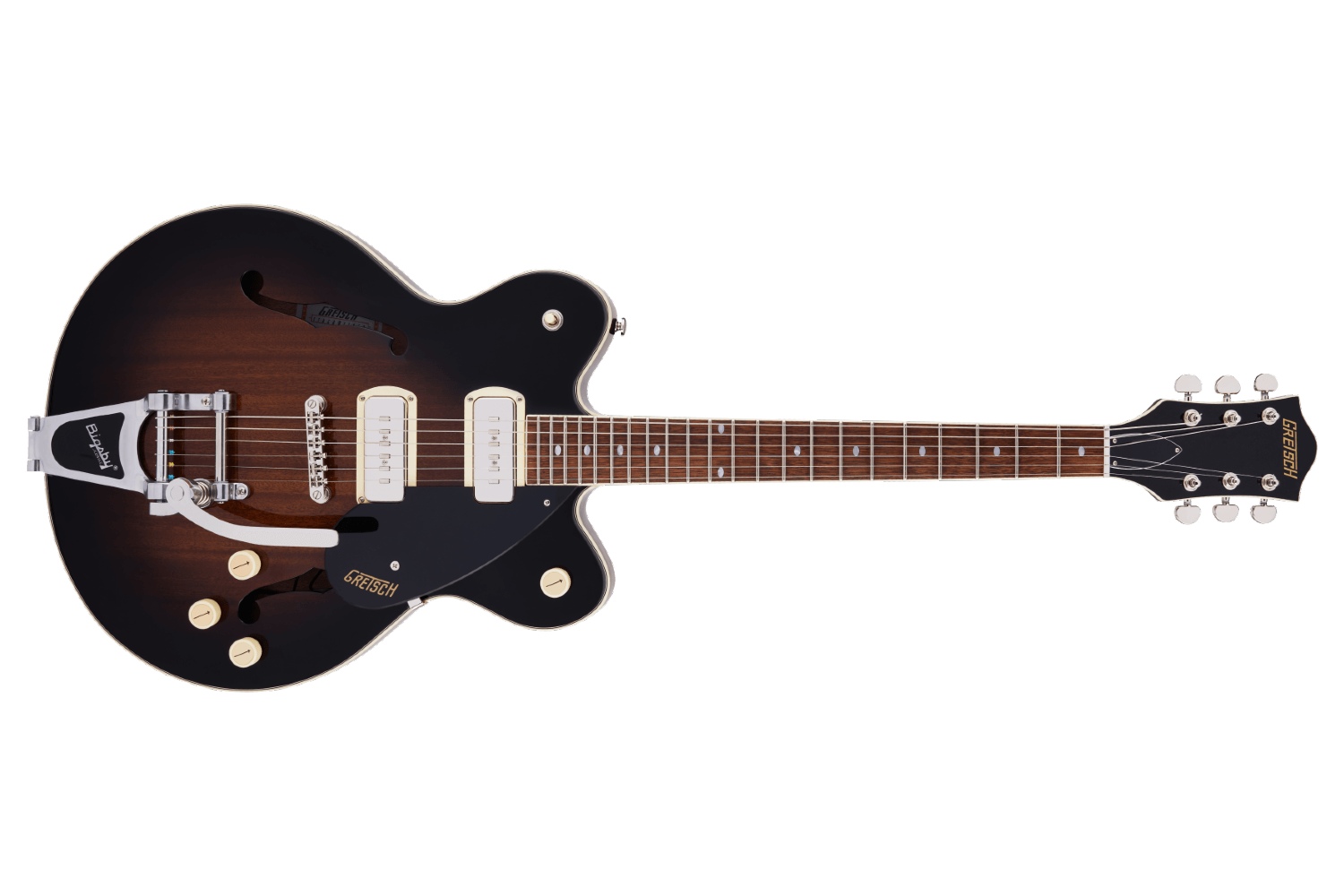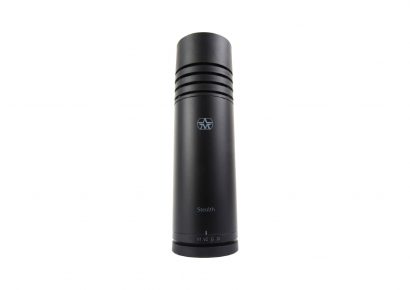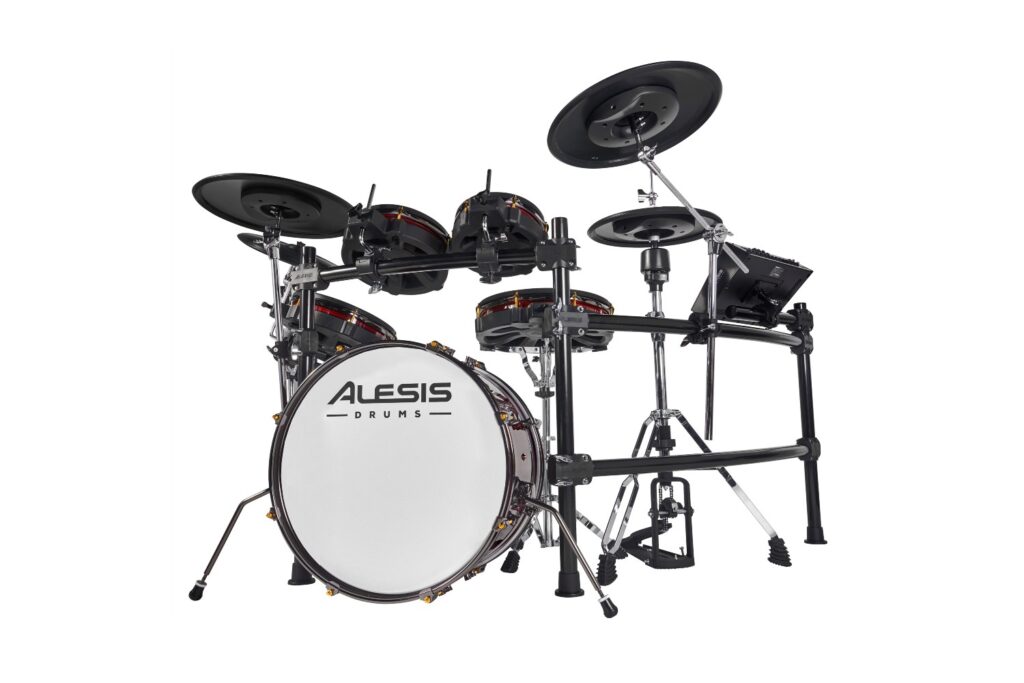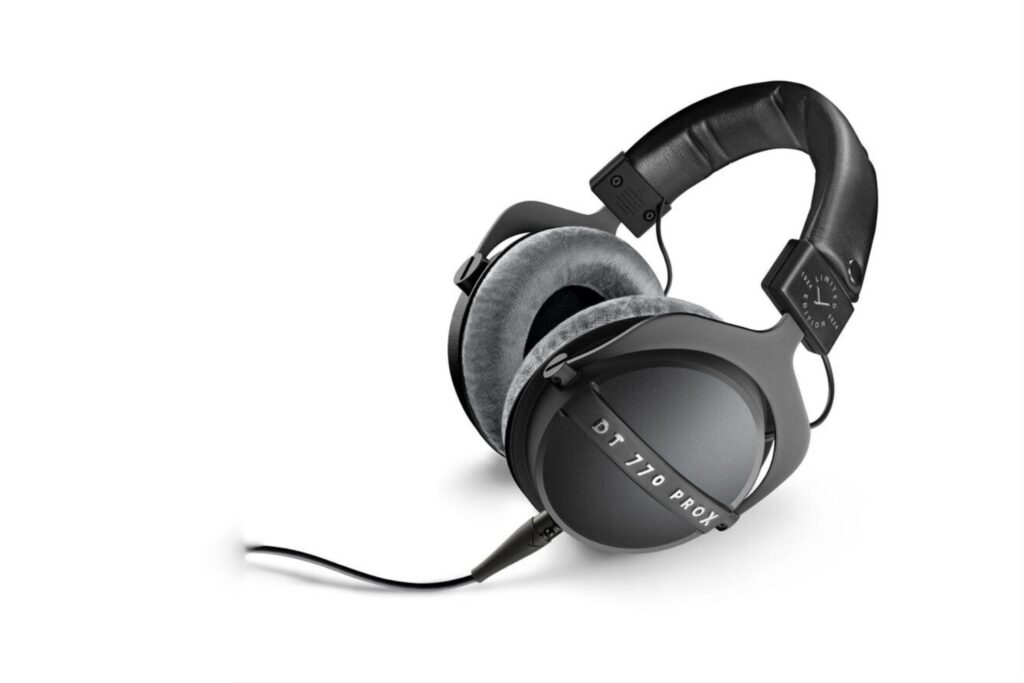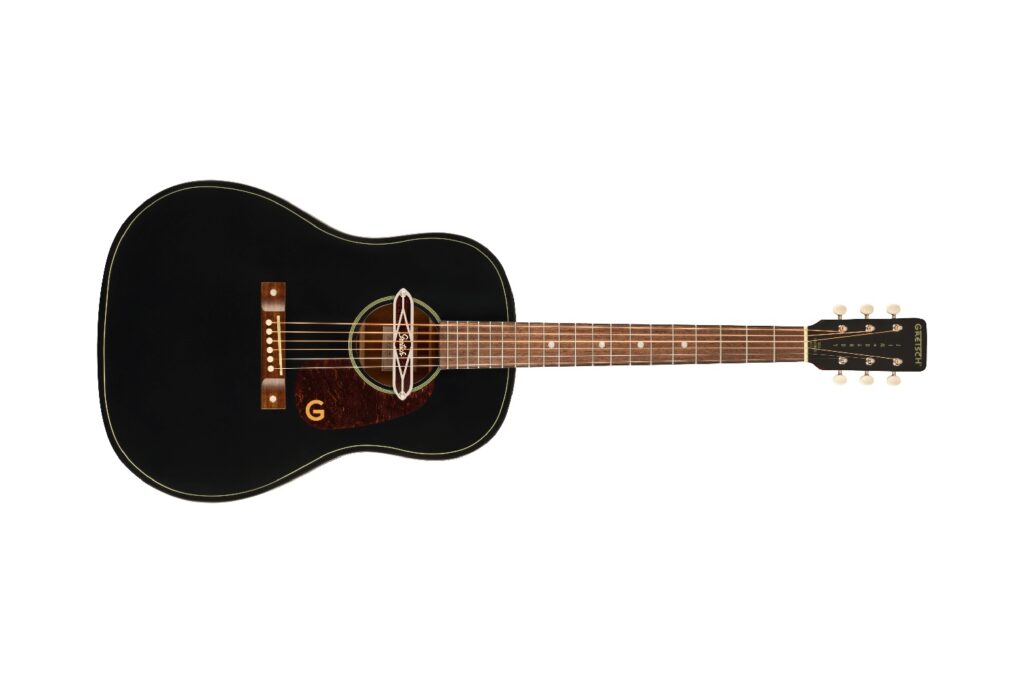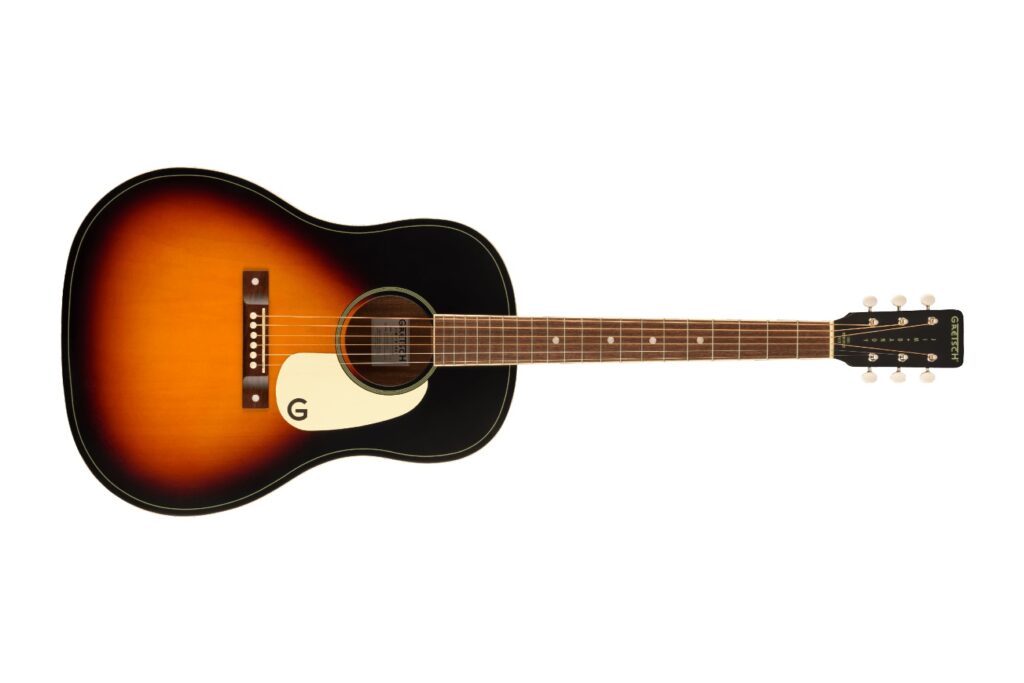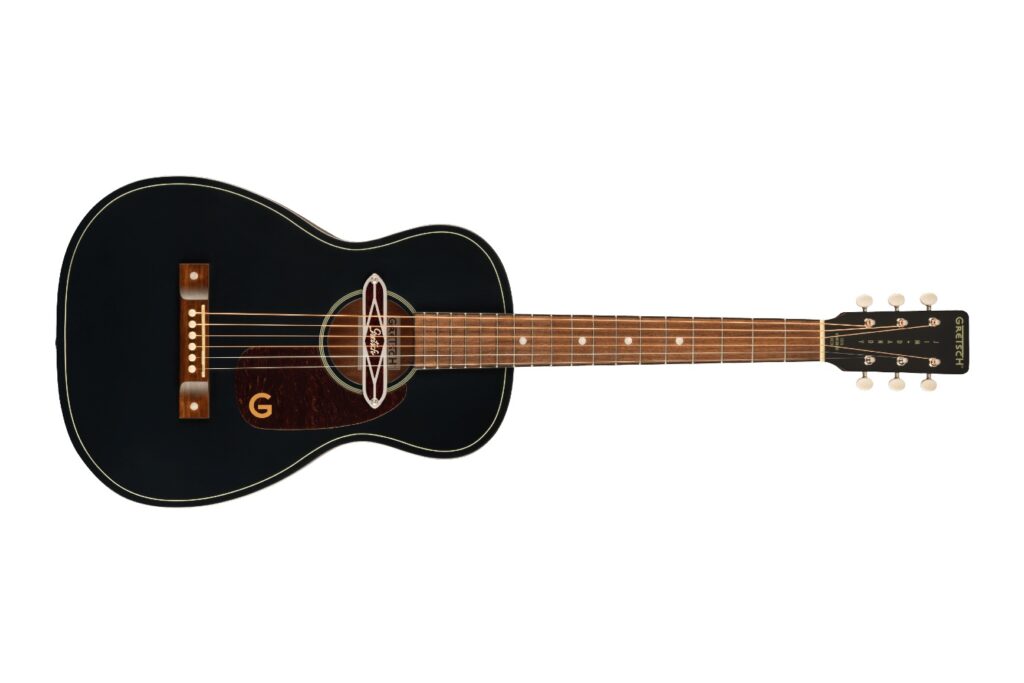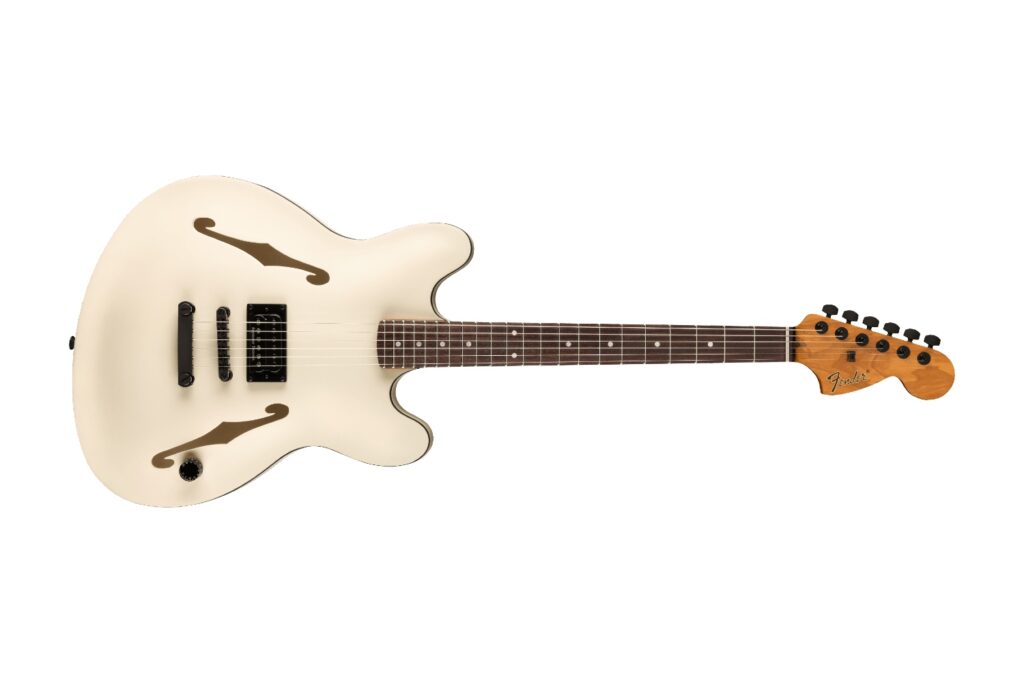Fender Australia | Enquire for pricing
Gretsch is a company known for big, resonant hollow body guitars. Their famed 6120 is as well known as the dreadnought or Les Paul, and is as synonymous with rock as any of the aforementioned shapes. A lesser known body shape is Gretsch’s double cut centre block guitars, namely the Broadkaster in their Pro Series range or its little sibling, the aptly named G2622T Centre Block Double-Cut in their Streamliner range. Marketed towards a larger audience at a more accessible price point, Gretsch’s Streamliner range features the same classic stylings, design, and intuitive features of their much, much more expensive Pro Series and Custom Shop creations.
Read more product reviews here.
This Streamliner guitar specifically features a laminated mahogany body, thinner than the bigger 6120-style guitars, Gretsch’s new FideliSonic P90 pickups as well as a licensed Bigsby B70 vibrato. Gretsch’s take on the classic P90 is a warm and fat concoction of low mids and a clear high end, taking a more DynaSonic-style approach to the P90. While P90’s are generally approaching mud territory in the most glorious way, the FideliSonic offers the brittle high end that made the DynaSonic so famous for finger pickin’ and rockabilly slapback style playing. Their controlled sound is also further refined by the centre block running along the middle of this semi-hollow electric guitar.
A centre block is, as its name suggests, a block of wood that runs along the centre of an otherwise hollow body. Entirely acoustic and hollow body instruments alike have their advantages and a unique sound, but with a little gain they can feedback easily, as the sound bounces around inside the body and back into itself, causing feedback loops and unwanted noise. The centre block creates a break in the hollow body, offering two separate ‘wings’ of space inside the body, and prevents the sound from bouncing too much and progressively accumulating into feedback. Gretsch’s history of experimenting with bracing such as centre blocks has a long history of chasing the perfect balance of tone and resonance while combatting feedback with more modern gain and amplifiers.
When you start to discuss bracing you hark right back to violins and string instruments, as well as the mandolins that Gretsch produced around the 1920s. These kinds of instruments often used parallel bracing, or sound post bracing, the latter of which was a simple wooden post that connected the front of the instrument to the back to support the string tension and bridge, while leaving the body as hollow as possible. With the introduction of modern guitar strings, tunings, and the Bigsby, Gretsch required a little more support when they branched out into more modern electric guitars in the 50s and 60s.
Trestle bracing was used from the late 50s into the early 60s, and utilised two bridge-shaped struts to support the neck and bridge of the guitar, before “ML” bracing was used to further eliminate feedback and retain the acoustic quality of these hollow body guitars. “ML” bracing is a hybrid combination of trestle and parallel bracing, featuring just one post beneath the bridge to support the strings and vibrato. The idea of a centre block was introduced around the same time, and further eliminated the feedback problems associated with hollow guitars and further pushed them into a more modern sound. This is where the design for the G2622T comes from; a modern player with the acoustic and resonant qualities that made the guitar what it is. It can handle modern amplification, pedals and gain without feeding back, and offers modern tones, sounds and playability without the risk of huge amounts of noise on stage or while recording.
The body of the G2622T is laminated mahogany, and this particular model is finished in a retro ‘Brownstone’ stain that’s coupled with cream-coloured knobs and nickel hardware. The centre block is spruce and runs along the length of the body between the F-Holes. It has a 24.75-inch scale length, so most players will feel right at home, and the neck is Gretsch’s classic “U” shape and a 12-inch fretboard radius. There are 22 frets in the laurel fretboard, a wood seen more and more commonly because of its similarity both aesthetically and physically to rosewood. The body is just 1.75 inches (44.45 mm) deep, and the curves of the body’s hips and slight arch sit nicely against a player’s body.
The G2622T-P90 Streamliner Centre Block Double-Cut P90 is a classic guitar for all intents and purposes. Gretsch’s affinity for world-class hollow body guitars is untouchable, and even their most accessible and affordable ranges feature these classic designs and stylings. P90s are new territory for Gretsch, and the FideliSonic P90s are somehow both an instant classic and an entirely new sound. The decision to design a double-cut electric with a centre block brings another tool to the player and artist, providing a sound largely different to what competing brands are offering, but still a comfortable play that most guitarists will feel at home on. The Bigsby is classic Gretsch, as is the classic hardware with “radio arrow” knobs and the Brownstone stain, harkening the guitar back to its roots: jazz boxes and mandolins. The G2622T-P90 Streamliner is simultaneously a nod to Gretsch’s beginnings, as well as pushing the brand and guitar design forward.
For more information head to Grestch’s website. For local enquiries, get in touch with Fender Australia.
